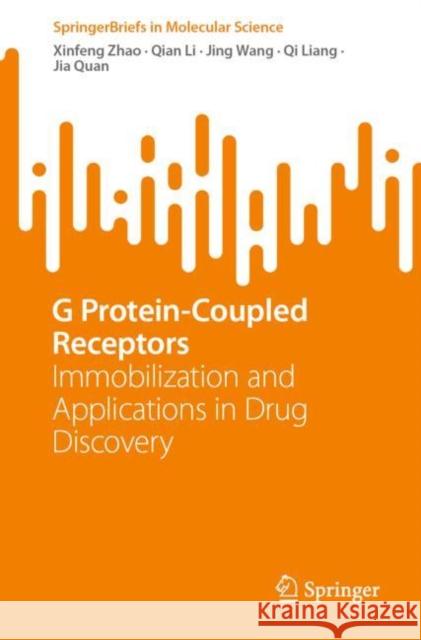G Protein-Coupled Receptors: Immobilization and Applications in Drug Discovery » książka
G Protein-Coupled Receptors: Immobilization and Applications in Drug Discovery
ISBN-13: 9789819900770 / Angielski / Miękka / 2023 / 91 str.
G Protein-Coupled Receptors: Immobilization and Applications in Drug Discovery
ISBN-13: 9789819900770 / Angielski / Miękka / 2023 / 91 str.
(netto: 192,11 VAT: 5%)
Najniższa cena z 30 dni: 192,74
ok. 22 dni roboczych
Bez gwarancji dostawy przed świętami
Darmowa dostawa!
This book summarizes the progress made to functional immobilize G protein-coupled receptors (GPCRs) through site-specific or orientated recognition in both non-covalent and covalent manners. The last decade is the dawn of the “post-structural biology” era for G protein-coupled receptor research. As an emerging approach for state-of-the-art immobilization, this book discusses efforts to explore the elegance of naturally-occurring biochemical reactions by using their high specificity and robust reactivity in the complex system, such as site-specific conjugation by covalent recognition between enzymes and their substrates. With the perspective of protein-drug interactions, this book also reviews the applications of protein immobilization, with an emphasis on G protein-coupled receptors, in drug discovery and protein-ligand interaction analysis. In addition, the merits, opportunities and disadvantages are analyzed for different immobilization methods, and a perspective for future directions is presented. Given its scope, this book appeals to a broad readership, particularly researchers engaged in the field of analytical chemistry, bioconjugate chemistry, and chemical biology, and other related field, as well as teachers of relevant majors in colleges and universities.
This book summarizes the progress made to functional immobilize G protein-coupled receptors (GPCRs) through site-specific or orientated recognition in both non-covalent and covalent manners. The last decade is the dawn of the “post-structural biology” era for G protein-coupled receptor research. As an emerging approach for state-of-the-art immobilization, this book discusses efforts to explore the elegance of naturally-occurring biochemical reactions by using their high specificity and robust reactivity in the complex system, such as site-specific conjugation by covalent recognition between enzymes and their substrates. With the perspective of protein-drug interactions, this book also reviews the applications of protein immobilization, with an emphasis on G protein-coupled receptors, in drug discovery and protein-ligand interaction analysis. In addition, the merits, opportunities and disadvantages are analyzed for different immobilization methods, and a perspective for future directions is presented. Given its scope, this book appeals to a broad readership, particularly researchers engaged in the field of analytical chemistry, bioconjugate chemistry, and chemical biology, and other related field, as well as teachers of relevant majors in colleges and universities.











